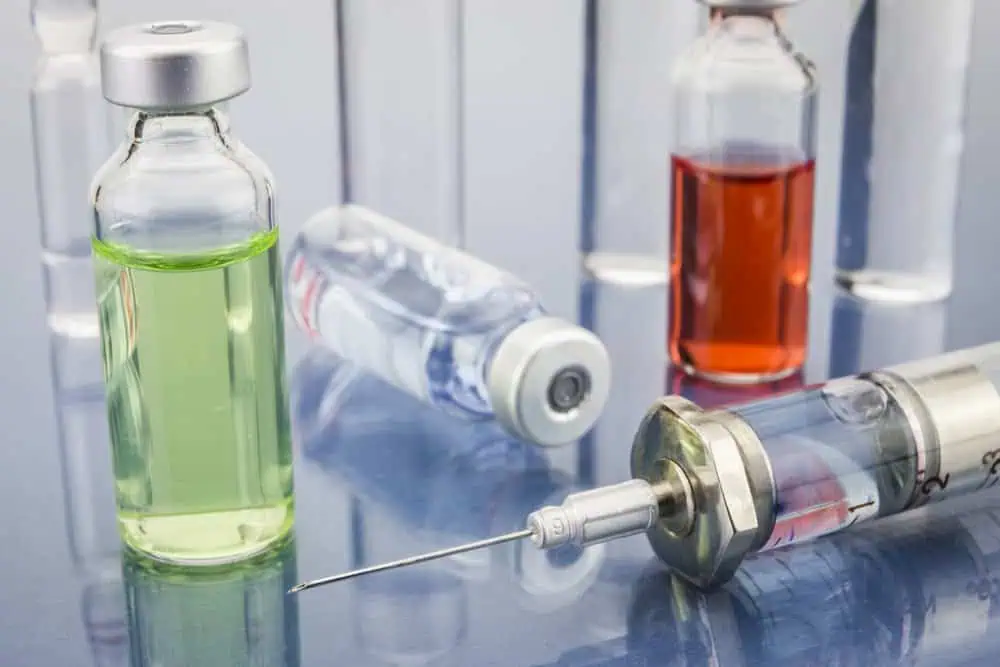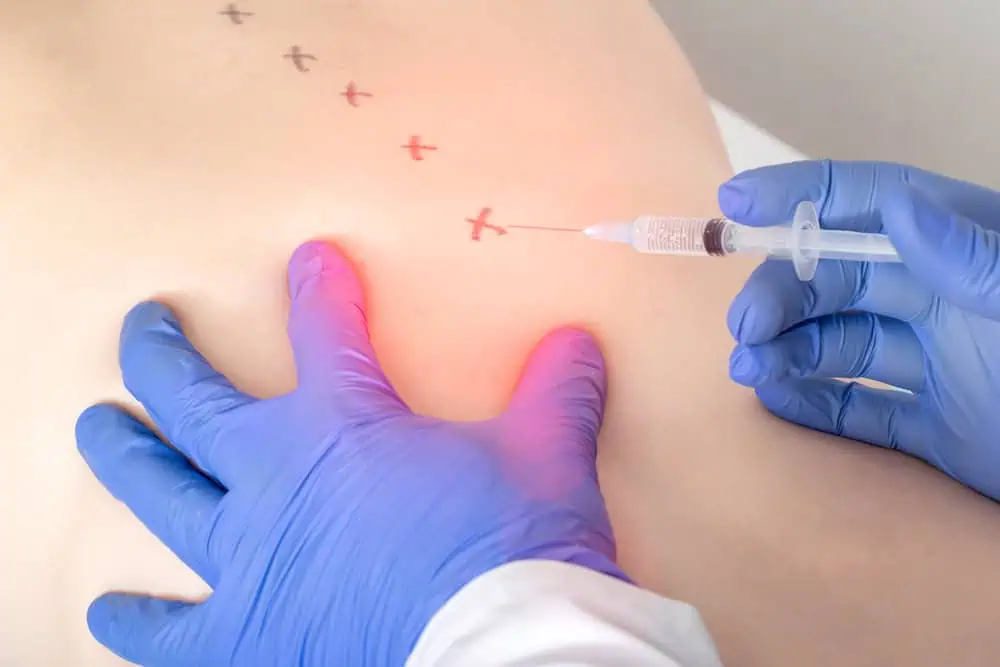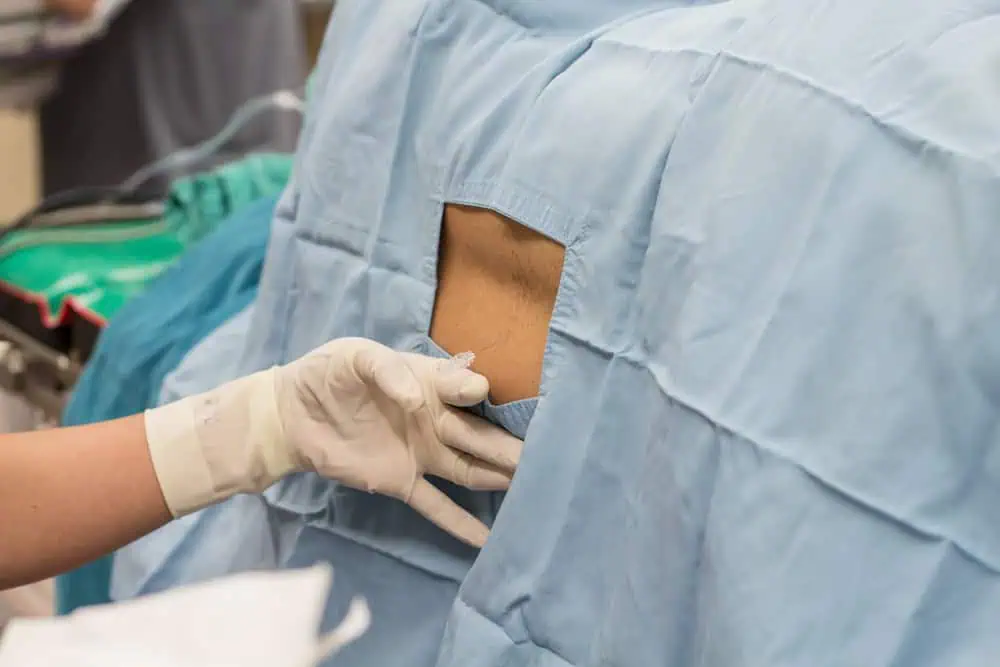Facet joint injections are a targeted approach to managing spinal pain, reducing inflammation, and providing diagnostic clarity for conditions affecting the facet joints of the spine. Comprising a combination of a local anesthetic and a steroid, these injections deliver relief directly to the affected joints. When conservative treatments like medications or physical therapy do not suffice, physicians may recommend a facet joint injection as the next step in pain management.

For many, the goal of a facet joint injection is dual: to alleviate pain and to isolate the pain generator within the spine. Patients considering this minimally invasive procedure should be aware of how to prepare, what the process entails, as well as the potential risks and benefits. An accurate understanding of these elements will enable informed decisions and realistic expectations about the outcomes. Insurance and cost considerations are also part of the decision-making matrix for this treatment, with questions best directed to healthcare providers and insurance representatives.
Key Takeaways
- Facet joint injections provide both therapeutic and diagnostic benefits.
- Preparations and an understanding of the procedure can enhance patient outcomes.
- It’s important to consider post-injection care and long-term success rates.
Understanding Facet Joints
Facet joints, essential components within our spinal structure, are located between the vertebrae, the series of bones that make up our spine. Each vertebra is equipped with two of these synovial joints, one on each side, allowing for flexibility and range of motion.
Our facet joints are enveloped in cartilage, which is integral for smooth, frictionless movement. Surrounding this cartilage is a protective capsule that secretes synovial fluid to aid in the lubrication of the joint surfaces.
In our efforts to maintain spinal motion, these joints play a pivotal role. They enable us to perform actions such as twisting and bending while also aligning our spine properly. Our muscles and ligaments attach around these joints, working together to stabilize the spine.
However, we must also recognize the occurrence of facet joint syndrome, a condition that may result from excessive stress or degeneration of the joint. Typically manifesting as pain and a restricted range of motion, this syndrome is often a consequence of aging-related wear or arthritis.
Let’s review the relevant aspects succinctly:
- Facet Joints: Small, stabilizing structures between spinal vertebrae.
- Function: Allow flexibility for bending and twisting; maintain spinal alignment.
- Composition: Enclosed in cartilage, surrounded by a lubricating synovial capsule.
- Connection: Essential link points for muscles and ligaments.
- Common Issues: Facet joint syndrome, arthritis leading to pain and limited motion.
In understanding our facet joints, we appreciate their significance to our overall spinal health and mobility. It’s crucial for us to acknowledge their function to comprehend many back-related ailments.
Facet Joint Injections Overview

Facet joint injections are a minimally invasive procedure designed to provide pain relief for patients with various spinal conditions. By administering medication directly into the facet joints, which are responsible for providing stability and flexibility to the spine, these injections can significantly alleviate discomfort.
Indications and Contraindications
Indications:
Facet joint injections are indicated for those experiencing chronic back or neck pain attributable to a range of conditions, including facet joint syndrome, arthritis, spinal stenosis, and ankylosing spondylitis. These injections are also used to confirm a diagnosis when the exact source of pain is suspected to be the facet joints.
Contraindications:
Patients should not receive facet joint injections if they have:
- Active infections: To prevent the spreading of pathogens to the spine.
- Bleeding disorders: Due to the risk of excessive bleeding.
- Known allergies to injection components: This could cause severe allergic reactions.
- Pregnancy: The procedure’s effects on the fetus are not fully known.
Diagnostic Vs. Therapeutic Injections
Diagnostic Facet Joint Injection:
This type of injection is performed to identify if the facet joints are the source of pain. By injecting a local anesthetic into the facet joints, if it results in immediate pain relief, it suggests that the targeted facet joints are indeed causing the pain.
Therapeutic Facet Joint Injection:
Therapeutic injections not only help diagnose but also relieve pain by reducing inflammation. They usually comprise a mixture of anesthetic and a corticosteroid for prolonged pain relief. These are particularly beneficial for patients with chronic conditions like facet joint disorder or arthritis and aim to improve the quality of life by decreasing pain and inflammation.
Pre-Procedure Considerations
Before undergoing a facet joint injection, it’s crucial that we conduct a comprehensive patient assessment and utilize precise imaging techniques. These steps ensure that the procedure is both necessary and likely to be effective for the patient’s specific condition.

Patient Assessment
We begin with a thorough medical history review and a physical exam. Our aim is to understand the patient’s overall health, previous treatments, and the nature of their pain. It’s essential for patients to disclose all medications and supplements they are currently taking, as certain drugs may need to be paused before the procedure. If a patient is on any blood thinners, we may adjust this regimen to reduce the risk of bleeding complications.
Imaging Techniques
To pinpoint the exact facet joints causing pain, we rely on advanced imaging modalities. Fluoroscopy, a real-time form of X-ray, allows us to guide the needle with high precision. Sometimes, we may use computed tomography (CT) scans or ultrasound as well. The use of a contrast dye helps us ensure the medication is delivered accurately within the joint space. During imaging, we always take the utmost care to minimize the patient’s exposure to any contrast agent and radiation for their safety.
The Injection Process
Facet joint injections are a form of pain management treatment involving the precise placement of medication into the facet joints. This section will guide you through the necessary preparation, the specific technique used during the procedure, and the recommended post-procedure steps.
Preparation
Before undergoing a facet joint injection, we ensure that our patients understand the process. This involves confirming the target area with fluoroscopy, an imaging technique used for guiding the needle placement. Patients are typically advised to avoid eating for several hours before the procedure. Sedation is generally minimal, if used at all, but it’s essential that you arrange for someone to drive you home afterwards. A sterile technique is paramount, and thus the skin around the injection site will be thoroughly cleaned to prevent infection.
Procedure Technique
During the facet joint injection, we apply a local anesthetic to numb the area. Under fluoroscopic guidance, we carefully introduce a needle into the facet joint space. Precision is key here, as accurate placement of the needle is imperative for the success of the injection. Once in position, a combination of a steroid and an anesthetic medication is injected to reduce inflammation and pain. In certain cases, ultrasound may be used as an alternative to fluoroscopy for visualization.

Post-Procedure
Immediately after the injection, our patients spend a short time in monitoring to ensure there are no adverse reactions to the medications administered. We typically allow patients to rest for the remainder of the day. Follow-up is a crucial part of the process, and we schedule it to assess the efficacy of the treatment and decide on any further conservative treatment measures. We advise patients to track their pain level following the procedure and to limit strenuous activities for several days.
Potential Risks and Complications

When considering a facet joint injection, we must weigh the benefits against potential risks and complications. These can range from common side effects to rarer, more severe issues.
Common Side Effects
- Swelling: Some patients may experience swelling around the injection site, which is usually temporary.
- Pain: It’s not unusual to feel pain at and around the area where the injection was administered; however, this discomfort is often short-lived.
- Increased Back or Neck Pain: Initially, the injection site may feel more painful; this pressure usually subsides fairly quickly.
Rarer Complications
- Infection: Although rare, there is a possibility of infection at the injection site or within the facet joint itself.
- Bleeding: Minor bleeding is possible due to the needle penetration, particularly for patients with underlying bleeding disorders or those on anticoagulant therapy.
- Nerve Damage: Very infrequently, nerve damage can occur, potentially leading to numbness or weakness.
- Allergic Reactions: Allergies to the medication used are possible and can range from mild to severe.
- Serious Adverse Events: These occur very rarely but can include more significant complications related to the procedure or medications used.
Post-Injection Care and Management

After receiving a facet joint injection, the management of your recovery is crucial for optimal pain relief and to enhance the healing process. We’ll guide you through the immediate care post-injection and explain how to approach rehabilitation and physical therapy effectively.
Immediate Care
Upon completion of the facet joint injection, it’s vital for us to observe a few key practices. First, rest is recommended for the remainder of the day to allow the anti-inflammatory medication to take effect without added stress to the area. We need to monitor for any signs of swelling or increased pain, as these can be normal but should resolve relatively quickly. Icing the injection site in intervals (typically 20 minutes on, 20 minutes off) is often advised to help alleviate any discomfort or swelling.
Rehabilitation and Physical Therapy
The initiation of physical therapy usually begins within a few days post-injection. Our goal is to improve range of motion and strengthen the surrounding muscles while ensuring we do not aggravate the injection site. A tailored physical therapy program is critical, focusing on gradual progression to restore function and enhance pain relief. We incorporate exercises that promote flexibility, core stability, and muscular endurance. Remember, it’s crucial to adhere to the recommended therapy schedule and exercises to achieve the best results and prevent re-injury.
Expected Outcomes and Success Rates
In evaluating the efficacy of facet joint injections, we consider both immediate pain relief and longer-term pain management. Clinical practice guidelines and research suggest varying levels of success, largely dependent on patient selection and the cause of pain.
Short-Term Outcomes
- Pain Relief: Patients typically experience a reduction in pain shortly after the procedure. This immediate relief is often due to the local anesthetic used during the injection.
- Reduction in Inflammation: The anti-inflammatory medication, usually a corticosteroid, begins to reduce inflammation within the facet joint after the injection, contributing to short-term pain relief.
Long-Term Management
- Chronic Low Back Pain: For those suffering from chronic low back pain, facet joint injections may form part of a multimodal approach, incorporating physical therapy to achieve better outcomes.
- Success Rate: The long-term success rate is reported to be over 60% in some studies, although a definitive figure is difficult to establish due to the variation in patient response.
- Management of Chronic Spinal Pain: When integrated into a comprehensive management plan, including physical therapy and lifestyle modifications, facet joint injections can play a significant role in the management of chronic spinal pain.
Understanding Insurance and Costs

When navigating the costs for a facet joint injection, we must understand the roles of Medicare and private insurance, and how to handle any out-of-pocket expenses.
Medicare and Insurance Coverage
Medicare typically covers medically necessary treatments, including facet joint injections when criteria are met. However, coverage can vary based on the Medicare plan. For example, diagnostic facet joint injections are often covered if they’re considered necessary for the diagnosis of back pain. Nevertheless, it is crucial for us to confirm coverage specifics directly with our provider, as some Medicare Advantage plans might offer different coverage levels. Private insurance carriers also generally cover these injections, yet we may find variances in approvals and coverage amounts based on our policy details.
Handling Out-Of-Pocket Expenses
Even with coverage, we might face out-of-pocket costs such as deductibles, copayments, or coinsurance. These costs can vary significantly but typically, facet joint injections can range from $1,276 to $1,458 without insurance. To manage these expenses, it’s beneficial for us to discuss payment plans or financial assistance programs with the healthcare provider. In some instances, facilities offer sliding scale fees based on our income, helping to reduce the burden of these costs. It’s also advisable for us to keep all receipts and documentation for health spending accounts or tax deductions, where applicable.
Frequently Asked Questions
Facet joint injections are a common treatment for spinal pain. In this section, we address some of the most pressing questions patients often have about the procedure.
What are the differences between facet joint injections and epidural injections?
Facet joint injections target the small joints at each segment of the spine responsible for stability and movement, while epidural injections are administered into the epidural space to alleviate widespread pain such as sciatica.
How long can one expect relief from pain after a facet joint injection?
The duration of pain relief varies; some patients may experience relief for several months, but for others, the effect may last only a few weeks. Consistency and results can depend on the individual’s condition and reaction to the injection.
What are common side effects associated with facet joint injections?
Possible side effects include pain around the injection site, swelling, and temporary increases in back pain, but these are generally well-tolerated and resolve on their own.
What alternative treatments can be considered if facet joint injections are not effective?
Alternatives to consider include physical therapy, chiropractic care, medications, radiofrequency ablation, or surgery if conservative treatments fail to provide adequate relief.
What techniques are used during a facet joint injection procedure?
During the procedure, a needle is guided into the facet joint using fluoroscopic X-ray to ensure accurate placement, after which a mixture of anesthetic and corticosteroid is injected.
What are the average costs for undergoing a facet joint injection?
Costs for a facet joint injection can vary widely depending on location, facility, and whether it is covered by insurance. It’s best to consult with one’s healthcare provider or insurer for the most accurate estimate.












